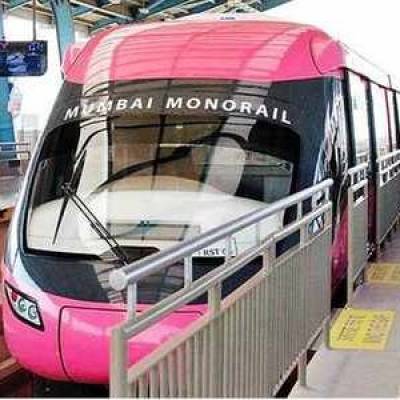

Mumbai's monorail is causing a financial deficit of ₹5.29 billion this fiscal year. Officials are deliberating whether to procure 10 new monorail carriages and enhance the infrastructure. The monorail has proven to be an economic burden, with losses amounting to ₹2.55 billion in the 2022-23 period. During the same time frame, the monorail generated only ₹75 million in revenue. However, it is projected to achieve ₹13.64 crore in revenue in the upcoming year, 2023-24. The Mumbai Metropolitan Region Development Authority (MMRDA) will convene meetings with the state government to determine the fate of the monorail. Presently, the monorail operates 200 daily services with 10 sets of carriages, attracting a daily ridership of only 9,000-10,000 passengers.
With anticipated losses of ₹5.29 billion in the ongoing fiscal year, the monorail in Mumbai, operating along the Jacob Circle-Wadala-Chembur route, is proving to be an uneconomical venture within the city's public transportation system.
Representatives from the Mumbai Metropolitan Region Development Authority (MMRDA) have indicated that they are contemplating whether to proceed with the acquisition of 10 new monorail carriages and additional investments in station infrastructure upgrades.
An official stated that discussions will be held with the state government to make decisions regarding the monorail, which has evolved into a financial burden. The 20-kilometer-long mass transit system, originally touted as an 'iconic project,' is now depleting the financial resources of the MMRDA. Reports indicate that the MMRDA suffered losses amounting to ₹2.55 billion in the fiscal year 2022-23.
In the fiscal year 2022-23, the operational revenue from the monorail amounted to a mere ₹75 million, though there are expectations for this figure to increase to ₹136.4 million in the upcoming fiscal year 2023-24. The total expenditure, including the procurement of 10 new carriages, is estimated at ₹5.42 bilion.
This expenditure is divided into capital expenditure (Capex) of ₹291 crore and revenue expenditure of ₹2.52 billion, which encompasses costs related to personnel, civil works, administration, security, and maintenance, among others. The revenue expectations for the fiscal year 2022-23 were originally set at ₹269 million, but these figures were significantly lower, resulting in the actual revenue of ₹75 million.
An MMRDA official stated, "We will be engaging in discussions with the state government to explore options for the monorail, considering its current financial burden." Another official mentioned, "We are analyzing the financial statement to determine whether procuring 10 new monorail carriages and upgrading existing infrastructure is feasible."
Plans are in motion to construct travelators linking Jacob Circle and Mahalaxmi railway station to enhance connectivity between railway and monorail stations. The time interval between the two train services is roughly 18-20 minutes, and the proposed introduction of 10 new carriages will gradually replace the existing ones. The average lifespan of these monorail carriages is about 15 years. The prototype for the new carriages was initially expected by the end of the current year. The introduction of the 10 new carriages is projected to reduce the time interval between services to five to seven minutes.
Government authorities acknowledge that the monorail project, which commenced in 2014, has not achieved its intended success and has struggled to attract passengers. A government official remarked, "Development occurred along this route, and real estate developers capitalized on it, selling properties in the name of the monorail." However, the benefits did not accrue to the MMRDA. "We are exploring various revenue models to boost monorail revenue, but we will need to engage with higher authorities in the state government to address this project," stated the official.
Additionally, the metro lines are also facing financial challenges. The losses incurred by Metro line 2A (Andheri [W]-Dahisar) and line 7 (Dahisar [E]-Gundavali) amount to ₹281 crore in the fiscal year 2022-23. Despite carrying a daily ridership of around 1.85-2 lakh passengers, the revenue generated is ₹410 million, while expenses stand at ₹3.22 billion. Metro 2A has generated ₹190 million in revenue, while Metro 7 has generated ₹150 million. An MMRDA official expressed optimism, stating, "Although it might appear challenging at present due to limited rush outside of peak hours, we anticipate a positive turnaround once all metro lines are fully operational. This will allow us to recover operational costs." Recently, the MMRDA achieved a milestone of serving three crore passengers on lines 2A and 7.
See also:
MMRDA to link Mumbai Monorail corridor to Colaba-Seepz Metro-3 line
Mumbai's Underground Metro Project to Finish by June 2024